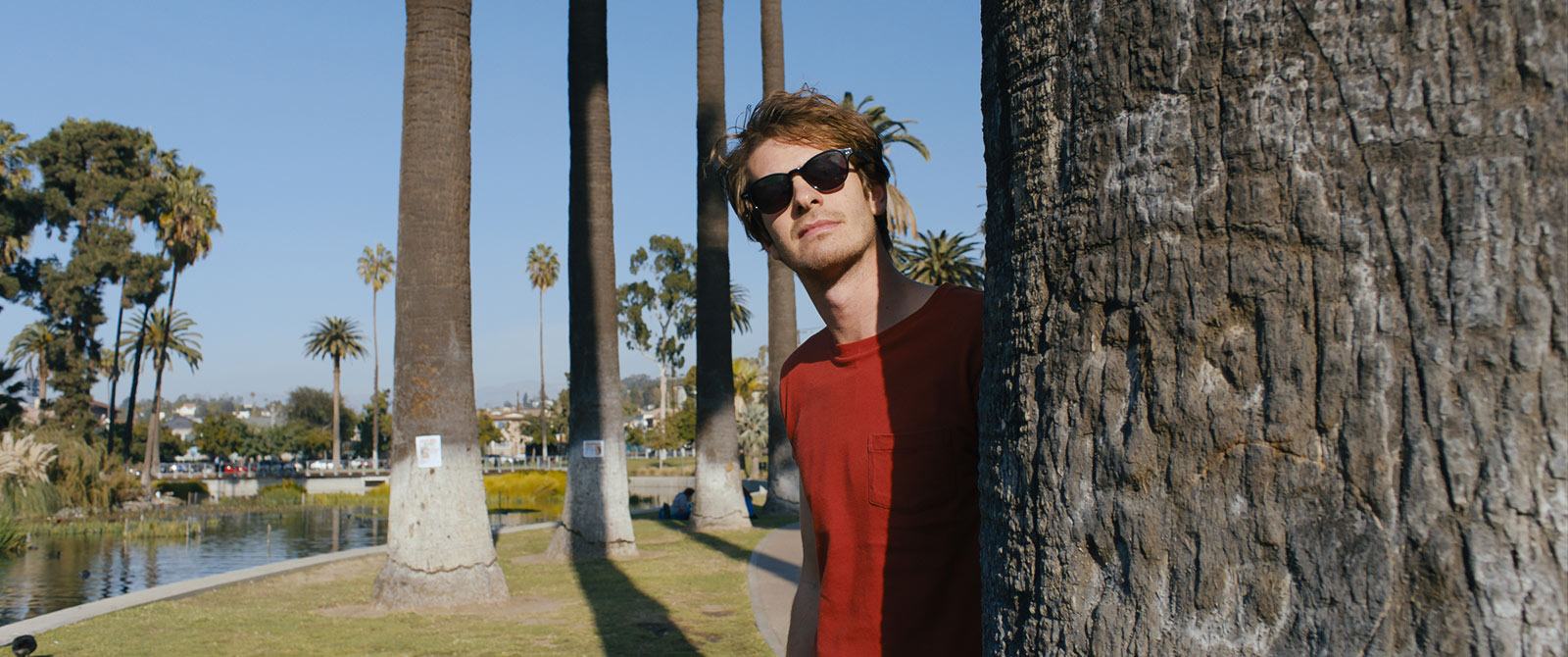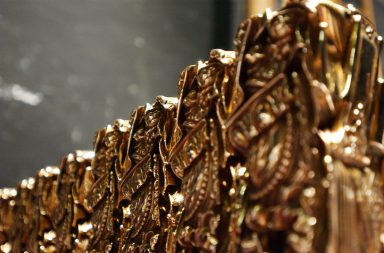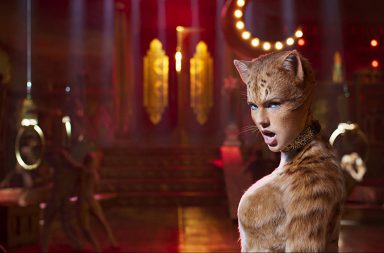David Robert Mitchell’s Under the Silver Lake was going to be one of the most expected films at this year’s Cannes Film festival, after the sensation that was It Follows, four years ago. What actually follows Mitchell’s John Carpenter-inspired atmospheric horror tale is this 140-minute long labyrinthine noir film, starring Andrew Garfield and Riley Keough, and again featuring an original score by Rich Vreeland, aka Disasterpeace. This time, the LA-based composer made a 180-degree turn in what he calls “the most ambitious project of [his] career,” writing for the first time ever for a full orchestra of nearly fifty musicians. Heavily influenced by some works by Bernard Herrmann and Jerry Goldsmith – the film itself is a deep dive into the Hollywood film noir era, somewhere between Hitchcock’s Vertigo, Lang’s The Blue Gardenia and Altman’s The Long Goodbye – the score is a wonderful jazz essay in the modern history of film scoring. The film is set nowadays but has many heavy emblematic elements from the 1950s, whether it be all the film posters or the drive-in scene; incidentally, the score blends the orchestra with Vreeland’s electronic instruments of choice, creating a noisy hybrid sound which enhances the hurly-burly that the main character, Sam (Andrew Garfield) goes through after the disappearance of his wannabe girlfriend (Riley Keough). On another level, the film’s musical aspect also features many songs that definitely do not belong to the 1950s and contributes to the whirl that is the whole film by blurring the lines between the now and the before, and therefore, between what is true and what is fake. Vreeland composed a glam-rock song for the imaginary band of the film – brilliantly called Jesus and the Brides of Dracula – which he produced with former R.E.M. producer Jacknife Lee, and a few R.E.M. tunes from their Monster era also play in the film. A great visual achievement, Under the Silver Lake also has an unexpected, complete and twisted musical dimension, with many different levels of interpretation.
Less than a year after our interview with the composer, we met Rich Vreeland at a restaurant in Cannes while the rain was pouring heavily over the Croisette – not the best welcoming gift, is it? The composer answered our questions about his groundbreaking compositions for the David Robert Mitchell film.
In the interview we did last year, you already talked about Under the Silver Lake. Did you jump onto the project from the very start?
I was involved pretty early, David sent me the script before shooting. There are popular songs in the movie, there are certain scenes where there is music onscreen, so I got involved in fall of 2016.
Were you his only choice, after having worked with David Robert Mitchell on It Follows?
I think so! (laughs)
How did the two of you meet?
He played this game that I scored, called Fez, and he liked the music and he reached out to me.
Your score for Under the Silver Lake is very reminiscing of the 50s noir pictures. Did you get a lot of directions from the director?
We tried some different things. On this project, I wanted to try writing diretly to the picture without any material. We tried that for about three weeks and we were having trouble being on the same page, so David and Julio, the editor, started temping into the film, and they felt like that period, musically, was the closest to what he wanted. We ended up working using a lot of references from classic films.
What did they use for temping the film?
There was a lot of material from different noir movies: we used Bernard Herrmann, some David Lynch movies, Jerry Goldsmith.
What musical training did you have?
I went to Berklee College, so I took some jazz theory and did a bit of counterpoint, but I’ve never written for orchestra before. But having this jazz training helped a lot for this score.
How did you get to work with Kyle Newmaster, who composed for Mitchell’s first film?
David had suggested working with Kyle on this film just to have someone to help me navigate the orchestra.
Where did you record the score?
We recorded in LA, so we used all local players.
Is it daunting to have to write for a massive orchestra for the first time?
I was very intimidated (laughs)! The whole project was that way, because it was such a new experience for me, whether it was working with a pop band, writing with a pop producer, or being on set, like, “Tell me what that’s like”, I had never done that before, or working with actors for some onscreen cues to all the orchestration, all the extra contracts…
How long did it take for you to write the score? This original music had to be pretty much written and very precise.
I started writing in January and probably wrote until September. Well, we started recording in September and we took a month off between them.
How did you enjoy mixing your musical world with a more classical approach?
Yeah, I mean, I didn’t think of it that way. I approached it as a new kind of project. Creatively, it was very challenging and fulfilling, but also very difficult and stressful! I had to figure out how to work for orchestra, and given the time constraints, I couldn’t. I had to come up with a good process.
Many thanks to Adrianna Perez & Thomas Mikusz (White Bear PR) and the American Pavilion. Special thanks to Rich Vreeland and Elizabeth Moroni.
Interview prepared, conducted, transcribed and edited by Valentin Maniglia and Marine Wong Kwok Chuen





